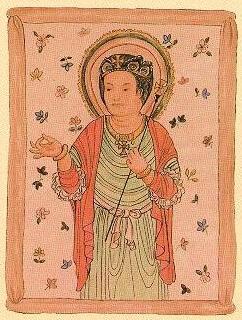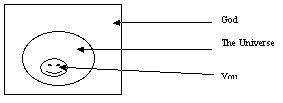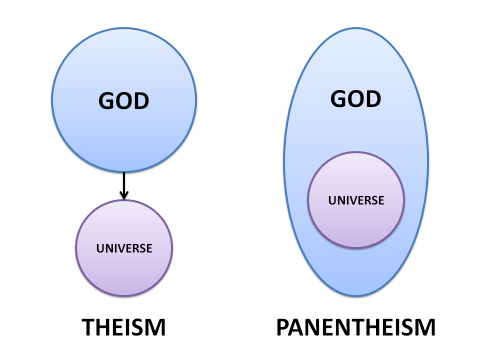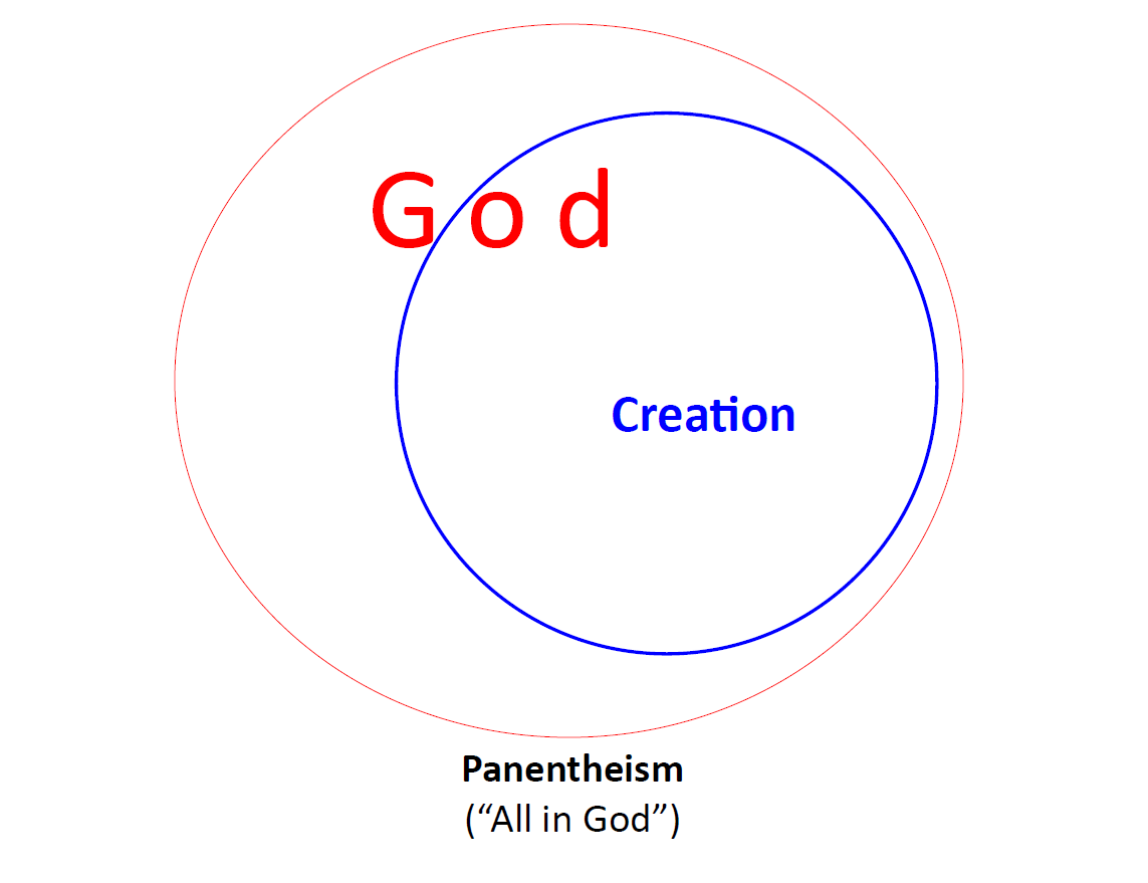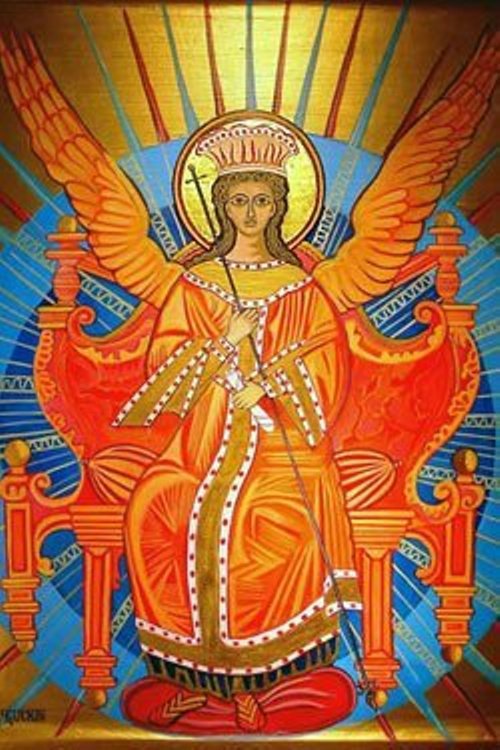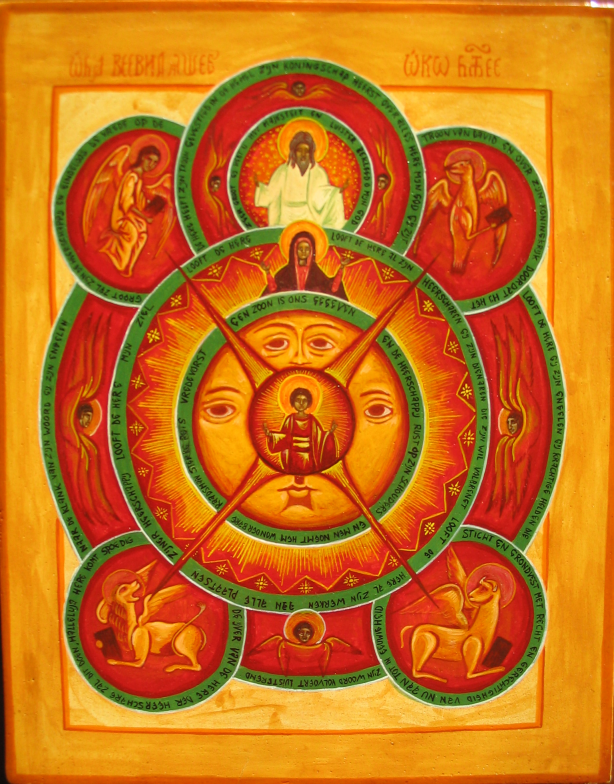- Jan 25, 2009
- 19,769
- 1,429
- Faith
- Oriental Orthodox
- Marital Status
- Private
- Politics
- US-Others
And as said before, please address what was already noted (if seriously dealing with what actual scholars - both Christian and Buddhist have said) rather than doing cherry picking by ignoring Nestorian Influence on early Pure Land Buddhism. It is not hidden and has been pointed out several times - including in the articles.Please show me where, specifically, your article proves that Pure Land Buddhism was influenced by Christianity.
.
As said before, it'd behoove you if speaking on Buddhist history/interaction to see the Nestorian roots in land PRE-CEDEDING the rise of Pure Land Buddhism (especially during the Mongol times) and the Buddhist texts themselves ..
The monk from Parthia in China during the 2nd century who spread Christian elements in Pure Land Buddhism (since Nestorian Christianity was already present)but it is but one fact among many others
And For further reference, as said best in
Assyrian Christian Influences on Early Japanese Buddhism:
Turns out that in 782 an Indian Buddhist monk named Prajna came to the Chinese imperial capital Chang'an. He carried with him a collection of Sanskrit Buddhist texts. He found an unlikely collaborator in doing his translations in the person of a Nestorian bishop, Adam. The two embarked on a twenty year long project. The results of their efforts was a seven volume collection of the Buddhas' teachings.
Near the end of their project Saicho and Kukai, two Japanese Buddhist monks arrived in quest of Buddhist texts. And they returned to Japan with the seven volume anthology. Kukai would become the founder of the Shingon school while Saicho would establish the Tendai school, from which both the Japanese Shin or Pure Land and the Zen schools would emerge.
Several scholars have speculated on the degree to which Bishop Adam's syncretic Nestorian Christianity seeped into those Chinese texts, and from there to consider to what degree Christian spirituality, if an eccentric version, could have influenced the formation of four different schools of Japanese Buddhism.
Editor's note: see the following books on the Assyrian Church of the East missionary activity in Mongolia, China, Korea, Japan and the Phillipines:
Near the end of their project Saicho and Kukai, two Japanese Buddhist monks arrived in quest of Buddhist texts. And they returned to Japan with the seven volume anthology. Kukai would become the founder of the Shingon school while Saicho would establish the Tendai school, from which both the Japanese Shin or Pure Land and the Zen schools would emerge.
Several scholars have speculated on the degree to which Bishop Adam's syncretic Nestorian Christianity seeped into those Chinese texts, and from there to consider to what degree Christian spirituality, if an eccentric version, could have influenced the formation of four different schools of Japanese Buddhism.
Editor's note: see the following books on the Assyrian Church of the East missionary activity in Mongolia, China, Korea, Japan and the Phillipines:
- By Foot To China: Mission of The Church of the East, to 1400
- The Monks of Kublai Khan
- History of Christianity in Asia: Volume One, Beginnings to 1500; Samuel Moffet; Harper Collins; 1994.

And as said before, besides that, on Christian influence on Early Buddhism, there are several other scholars speaking on the historical background of where Christianity influenced Pure Land Buddhism in its development:
- Part 2, Dr. Philip Jenkins, The Lost History of Christianity, Part 2 "
The other presentation I found to be highly excellent was entitled Object No. 14: The 'Nestorian Stone' or Church of the East Stele
It was presented by Martin Palmer, who wrote a book entitled "The Jesus Sutras" - more discussed in #17 as well as elsewhere in The Jesus Sutras (Part 1): Introduction | The Jesus Question and Sutras | Search Results | The Jesus Question
But on the video presentation by Palmer, for a brief description:It was presented by Martin Palmer, who wrote a book entitled "The Jesus Sutras" - more discussed in #17 as well as elsewhere in The Jesus Sutras (Part 1): Introduction | The Jesus Question and Sutras | Search Results | The Jesus Question
With our penultimate object, Martin Palmer takes us back many centuries to consider what is normally seen as a very modern phenomenon: Christianity in China. The object is the Church of the East stele - also known as the Nestorian Stone. Dated 781 AD it tells the story of the arrival and spread of Christianity in China in beautiful Chinese poetry and includes a fascinating version of the Gospel working with Christian, Daoist, Buddhist and Confucian imagery and terminology. In terms of Christian history, the Stele is deeply significant. It conveys a form of Christianity that taught Original Goodness not Original Sin. It was a non-power based form of early Christianity unlike the Roman Empire and Christianity and as such offered a completely different way of being Christian; it had women ministers, was largely vegetarian and refused to own slaves - unlike, for example, Buddhist monasteries in China. The Stele also has the best preserved texts from the Church of the East, which from the 5th century to the 13th century was two to three times bigger in terms of numbers than the Church of the West and spread at its height from present day Iraq through Iran, the Arabian Peninsula, East Africa, Iran, the Central Steppes, Afghanistan, India, China, Mongolia to Japan and Korea. Yet, its history is almost unknown in the West. Martin Palmer will explore the Stele's history, its theology and the radical challenge it presents to how we think about Christianity. Martin discovered the only remaining building from the Church of the East, built in 650 AD, and this is now to be the centre-piece of a new Chinese-Government funded 'Museum of Christianity in China' to open in three years at a cost of roughly £110 million. Martin will explore why the Stele, and this building, are of such significance to contemporary China.
And of course, if wanting to know more, one can go to Nestorian - Adventism in China or Four Historical Stages of the Indigenization of Chinese Christian Art : OMHKSEA
Claiming to speak on te Amida Buddha is NOT the same as actually addressing it, as others have pointed out - and others have noted repeatedly where his actions have actually been separate from Buddhist tradition anyhow. As noted before:When you look at the essential meaning of Amida Buddha, I've demonstrated several times that it's inseparably rooted in the person and teachings of the historical Buddha:
Amida and Christ
Hirota quotes Karl Barth's emphatic statement that Christianity is bound up with the historical figure of Jesus Christ. I believe Barth is correct in this respect. I do not agree with him that doctrines in other communities similar to Christian ones lack similar effects. His position here follows from his supernaturalistic view of Jesus Christ, a view I do not share. Iffaith and practice similar to that of Christianity have emerged independently of Jesus Christ, then I would expect them to have similar salvific efficacy.
Hirota points out that the emphasis on similarity abstracts from contexts that are very different. In the previous sections I have been exploring the extent to which the different contexts lead to different conclusions on points that are important to me. Here I want to ask whether the historical connection to Sakyamuni plays the same essential role for Pure LandBuddhists as the historical connection to Jesus Christ plays for Christians.
Some Buddhists seem to answer negatively. Buddhism, they say, has to do with theattainment of enlightenment rather that with a historical connection to a particularEnlightened One. The historical context and tradition within which one becomesenlightened is secondary. Some Buddhists have affirmed this difference betweenChristianity and Buddhism as displaying Buddhism's greater openness and freedom from exclusivity.
These Buddhist arguments led me at an earlier point to propose that in the further development of some forms of Buddhism it would be possible to relate Buddhism to figures outside the Buddhist tradition equally with those within it. I thought this might be particularly appropriate for Pure Land. My argument was that Pure Land Buddhism identified its founder with a mythical figure, Dharmakara, that there are advantages in connecting one'stradition to historical reality, that the emphasis on other power or grace is clearer in theChristian tradition than in most Buddhism, and that Jesus could function as an historicalembodiment and teacher of grace.
I realized, of course, that this was not a step that many Pure Land Buddhists were ready to take. And on the whole the proposal has been greeted by silence. However, John Yokota has taken it seriously and gone to some length to reject it. He agrees that connecting the act of compassion to an historical figure is desirable, but he shows that this can be done with Sakyamuni. He apparently holds that since this is possible, there is no reason to consider other embodiments of compassion outside the Buddhist tradition.
His point that the Pure Land emphasis on the compassion of Amida can be grounded inSakyamuni's life and practice is well taken, and I am interested in the response of otherPure Land Buddhists to his proposal. Is there recognition of the advantage of locating the act of compassion historically, or are most Pure Land Buddhists content with a mythicalaccount recognized as mythical?
Nevertheless, I continue to wonder whether the embodiment of compassion must be found in the Buddhist tradition? Is this a point of disagreement among Buddhists? To sharpen my question, I again revert to an account of Christianity.
I have said that virtually all Christians understand Christianity as inherently, essentially, related to Jesus Christ. Many do not agree with Barth that salvation is effective only through this one historical event, but they then typically argue that God works salvifically outside of Christianity as well as within. Christianity is tied to the historical event even though the salvation to which Christianity witnesses need not be.
I am asking whether the relation of Buddhism to Sakyamuni is similar to that of Christianityto Jesus despite the statements by many Buddhists that there is a difference. Specifically inPure Land Buddhism, must faith be directed toward figures reverenced in traditionalBuddhist teaching in order for it to be Buddhist faith? If faith in the grace manifest in Jesus Christ had the same form and the same effect as faith in the compassion manifest inGautama or the mythical vow of Dharmakara, would this be shinjin, and would it beBuddhist?
To answer negatively is certainly not to make oneself vulnerable to Christian criticism. It is to clarify that being Buddhist is being part of a community and tradition initiated historically by Gautama. It then can be discussed whether one can realize Buddha nature orenlightenment apart from being Buddhist, and here, I assume, most Pure Land Buddhistswould take the same position as many Christians, namely, that Amida's compassion worksindependently of the Buddhist community and tradition. Would others take a position analogous to Barth's, namely, that apart from the nembutsu there can be no shinjin, whatever the formal similarities?
Hirota quotes Karl Barth's emphatic statement that Christianity is bound up with the historical figure of Jesus Christ. I believe Barth is correct in this respect. I do not agree with him that doctrines in other communities similar to Christian ones lack similar effects. His position here follows from his supernaturalistic view of Jesus Christ, a view I do not share. Iffaith and practice similar to that of Christianity have emerged independently of Jesus Christ, then I would expect them to have similar salvific efficacy.
Hirota points out that the emphasis on similarity abstracts from contexts that are very different. In the previous sections I have been exploring the extent to which the different contexts lead to different conclusions on points that are important to me. Here I want to ask whether the historical connection to Sakyamuni plays the same essential role for Pure LandBuddhists as the historical connection to Jesus Christ plays for Christians.
Some Buddhists seem to answer negatively. Buddhism, they say, has to do with theattainment of enlightenment rather that with a historical connection to a particularEnlightened One. The historical context and tradition within which one becomesenlightened is secondary. Some Buddhists have affirmed this difference betweenChristianity and Buddhism as displaying Buddhism's greater openness and freedom from exclusivity.
These Buddhist arguments led me at an earlier point to propose that in the further development of some forms of Buddhism it would be possible to relate Buddhism to figures outside the Buddhist tradition equally with those within it. I thought this might be particularly appropriate for Pure Land. My argument was that Pure Land Buddhism identified its founder with a mythical figure, Dharmakara, that there are advantages in connecting one'stradition to historical reality, that the emphasis on other power or grace is clearer in theChristian tradition than in most Buddhism, and that Jesus could function as an historicalembodiment and teacher of grace.
I realized, of course, that this was not a step that many Pure Land Buddhists were ready to take. And on the whole the proposal has been greeted by silence. However, John Yokota has taken it seriously and gone to some length to reject it. He agrees that connecting the act of compassion to an historical figure is desirable, but he shows that this can be done with Sakyamuni. He apparently holds that since this is possible, there is no reason to consider other embodiments of compassion outside the Buddhist tradition.
His point that the Pure Land emphasis on the compassion of Amida can be grounded inSakyamuni's life and practice is well taken, and I am interested in the response of otherPure Land Buddhists to his proposal. Is there recognition of the advantage of locating the act of compassion historically, or are most Pure Land Buddhists content with a mythicalaccount recognized as mythical?
Nevertheless, I continue to wonder whether the embodiment of compassion must be found in the Buddhist tradition? Is this a point of disagreement among Buddhists? To sharpen my question, I again revert to an account of Christianity.
I have said that virtually all Christians understand Christianity as inherently, essentially, related to Jesus Christ. Many do not agree with Barth that salvation is effective only through this one historical event, but they then typically argue that God works salvifically outside of Christianity as well as within. Christianity is tied to the historical event even though the salvation to which Christianity witnesses need not be.
I am asking whether the relation of Buddhism to Sakyamuni is similar to that of Christianityto Jesus despite the statements by many Buddhists that there is a difference. Specifically inPure Land Buddhism, must faith be directed toward figures reverenced in traditionalBuddhist teaching in order for it to be Buddhist faith? If faith in the grace manifest in Jesus Christ had the same form and the same effect as faith in the compassion manifest inGautama or the mythical vow of Dharmakara, would this be shinjin, and would it beBuddhist?
To answer negatively is certainly not to make oneself vulnerable to Christian criticism. It is to clarify that being Buddhist is being part of a community and tradition initiated historically by Gautama. It then can be discussed whether one can realize Buddha nature orenlightenment apart from being Buddhist, and here, I assume, most Pure Land Buddhistswould take the same position as many Christians, namely, that Amida's compassion worksindependently of the Buddhist community and tradition. Would others take a position analogous to Barth's, namely, that apart from the nembutsu there can be no shinjin, whatever the formal similarities?
Last edited:
Upvote
0


